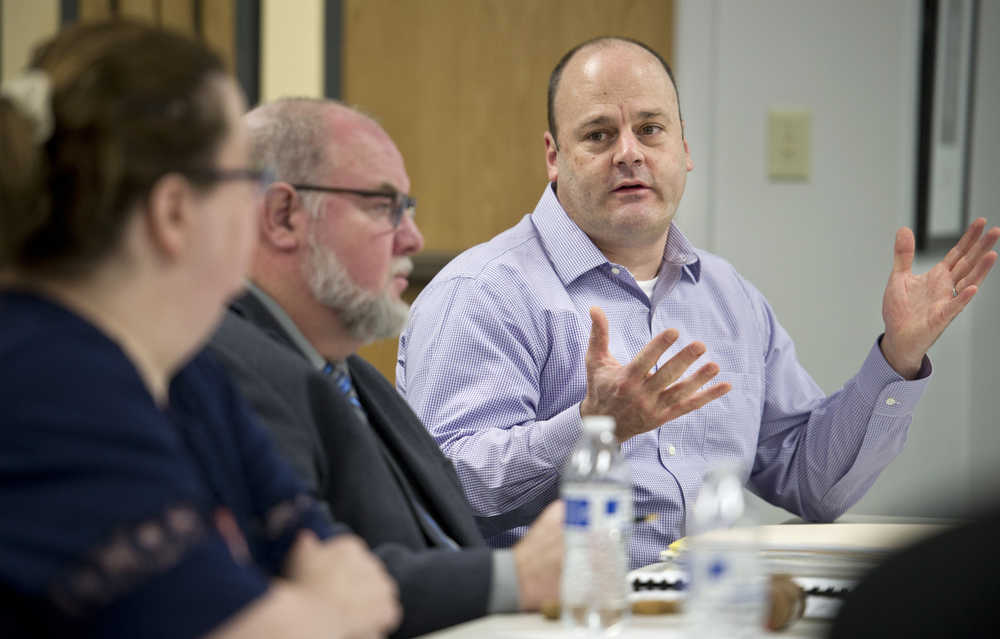In 2015, more women in Alaska entered adulthood without a traumatic sexual assault lingering in their past than years prior.
A survey funded by Alaska’s Council on Domestic Violence and Sexual Assault and analyzed by the University of Alaska Anchorage Justice Center showed that in five years, violence against women decreased by 8.3 percent. The 2015 survey revealed 58.6 percent of women statewide were victims of some form of violence.
“It does show that we’re moving in the right direction and that our efforts are working,” André Rosay, director of the Justice Center, said. “Overall, we are moving in the right direction and we are making a difference.”
“Unfortunately, the numbers are still atrocious, they’re still unacceptable,” he added, “but there is a lot of hope in knowing that we are starting to make a difference.”
Rosay presented an in-depth breakdown of the findings during a meeting Thursday with the council at the Goldbelt Building. The survey is conducted every five years, with 2010 being the first one. More women participated in the 2015 survey than in 2010 (3,027 in 2015 compared to 871 in 2010), and the results indicated fewer women were experiencing violence both throughout their lifetime and within the past year.
Seven percent fewer women statewide experienced intimate partner violence in their lifetime and 4 percent fewer women experienced other sexual assaults. Those percentage drops still add up to more than half of all Alaska women — 130,000 — experiencing violence in their lifetime. Intimate partner violence, sexual violence or both affected 21,401 women last year alone.
“Knowing that some have experienced multiple forms of sexual violence, these numbers show how far we still have to go,” Rosay said, adding that these figures don’t align with law enforcement figures statewide because physical violence is “the most” underreported crime. “We still have a long way to go.”
The survey also has several limitations that mean the figures reported are only conservative guesses at best. Rosay said the surveyed women are only asked questions in English and only if they had access to a cell phone or private residence phone line. Non-English speakers, women experiencing homelessness, women living in abuse shelters and those not allowed to use phones by their perpetrators still are unaccounted for.
“It (excludes) women who are likely to have a higher victimization history than the ones who are included in the survey,” Rosay said.
The survey also does not give geographical or ethnic breakdowns that Rosay said could prove beneficial.
CDVSA member L. Diane Casto suggested the Justice Center research why these numbers are on the decline in general.
“One question I would love to know the answer to is are we making a difference in the minds of men so that they are not perpetrating as often or are we making more of a difference in the minds of women who are saying, ‘No way, back off,’” she asked.
Casto also wanted to know if statewide efforts by the council, such as the Coaching Boys into Men high school program that’s a few years old, are helping to lower the instances of violence against women.
“That has got to make a difference in how they treat women as they get older, I think, I hope,” Casto said.
Rosay will present the statewide victimization results to the Senate Judiciary Committee March 14.
• Contact reporter Paula Ann Solis at 523-2272 or at paula.solis@juneauempire.com.

